Active Mind, Creative Spirit
Canyons on Wheels
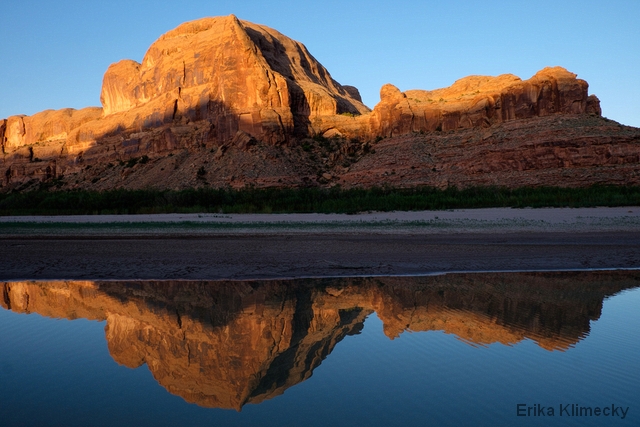
This is a year of extensive travel for me. It began in November, with almost a month in Nepal, then December on the Big Island of Hawaii, winter camping on Mt Rainier in January, then I put my head down on my new business for a month in February, before heading to the Olympic Peninsula in March. April was the canyonlands of the Southwest (which is described below), and installing honeybees in my backyard for the third year (ok, an adventure that isn’t travel, related, but notable). In May the hubby and I spent a week in Sweden, directly on the heels of my summit climb of Mt St Helens on Mother’s Day with a gaggle of other fun-loving moms. I’ve had a week and a half to check in with my kids, do laundry, stock the fridge, work some freelance jobs, and tomorrow I’m heading to Deception Pass for a week of camping with 140 kids while teaching them geology of the Fidalgo Island area by way of making arrowheads (flintknapping). The following week school wraps up and 3 days after that I am in the San Juans camping, but leaving early to unpack/repack for a trip to Yellowstone, followed closely by a trip to Napa. <Breath> And I am so happy! So, in the interest of keeping any of this straight a year from now, I’m collecting some of it in writing and photos. Here’s the canyonlands trip from April.
I spent a week living on a hippie bus in the desert southwest in April. I was with 30 junior high kids, one teacher, three other chaperones, the coolest bus driver ever, Jake, and his partner, Lauren, our camp cook. We moved as a wandering, untethered group, untied from everything else except our daily goals and this bus that we slept on, ate our meals from and camped with. When I was posting from the field during this trip, several of you asked why there weren’t any kids in my photos. I make it a policy not to publish OPKF (other people’s kids faces) without a model release, and I couldn’t properly vet all my photos on my camera screen with limited battery in the field on those rare times we got cell service (a girl can only do so much!). So that’s why you’re only seeing them now.
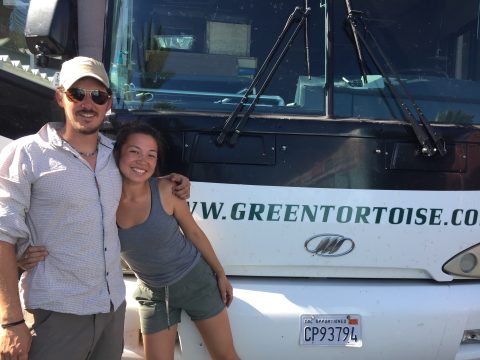
When we hiked in Zion we hiked three times in one day, throughout the park, and the kids were exhausted, but I heard not one word of complaining. We sweated a lot on the first hike… Seattle slugs getting accustomed to the desert weather. Colors were stunning, there were waterfalls scattered about, and I kept chasing the next hike and the next hike and the next hike.

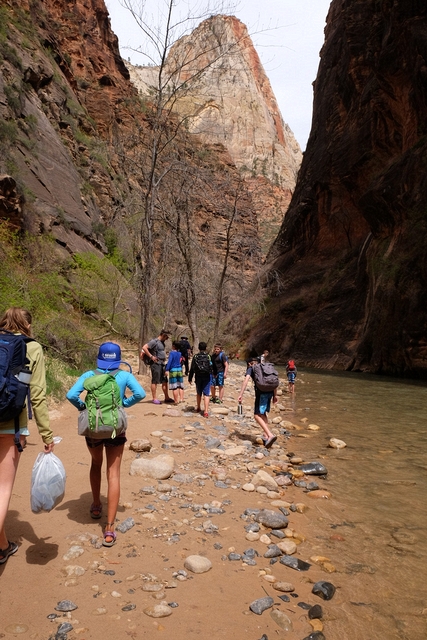

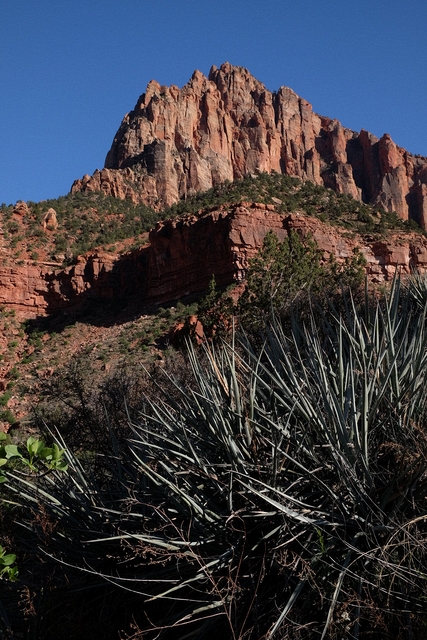
We spent three days in Moab on mountain bikes. What I learned about mountain biking in Moab is, the adrenaline rush I gain from this activity is far beyond any of my other outdoor activities. Hiking, mountain climbing, and running all give me a little endorphin boost, but mountain biking in red rock canyonlands sends me to the stars. It makes me feel invincible and I love the speed, the pumping of legs over rough terrain, the skinny trails and amazing, quickly changing views. It doesn’t hurt to have a $3000 bike underneath you. I mentioned my 25-year old steel-frame mountain bike to the guides. “Yeah, we call that model The Couch, because they are so heavy, you just sit back and mosey.” Truth! But if you train on those, then get on the ultra light, new-fangeldy bikes, you FLY! Having twenty-five gears at your disposal doesn’t hurt either.
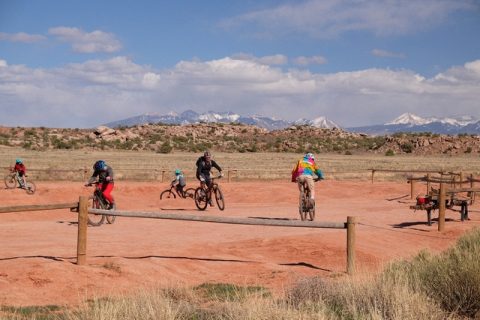

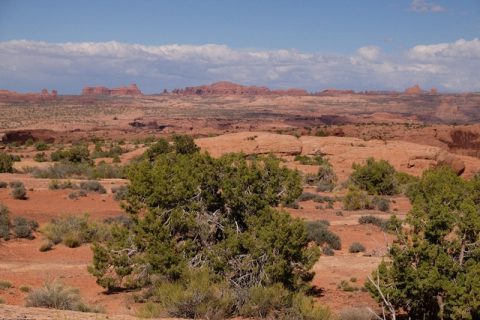

Canyon De Chelly is completely inside the Navajo Nation, so we camped nearby for easy access to the pretty stuff. The hike down to the bottom was gorgeous, swirling sandstone formations, and mini-plateaus with a huge backdrop of the canyon floor, edged with orange cliff walls and blue sky above. To me it seemed to be just the right size to get a good spread of photos during the hike down. I could tell the light would change drastically between the hike down and the return trip, so I snapped all the way down, taking advantage of the earlier light. Clouds and sun mixed perfectly to help me with that.
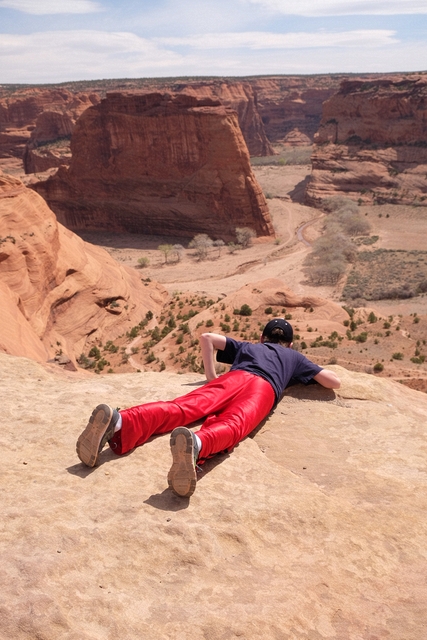
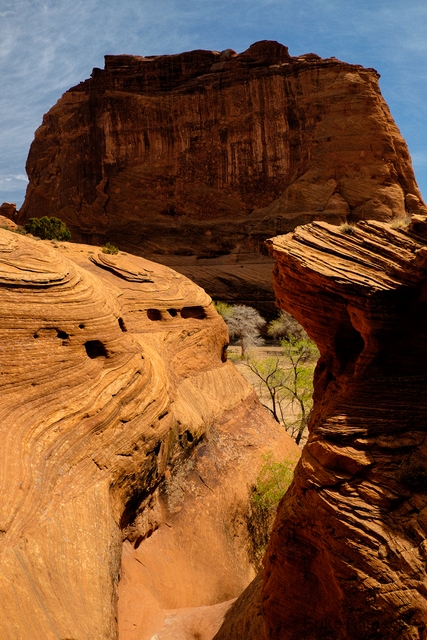
I couldn’t believe the wind whirling around us as we arrived at the bottom of the canyon. The teacher acted as our guide, describing the peoples who had called this canyon home: Navajo most recently (and presently), preceded by Hopi and Anazasi. There’s evidence of five thousand years of settlement. While we were there, I gave an art talk… I spent a lot of time in college studying the Native Southwest and Central Americans, their art, their petroglyphs, their styles. Besides plenty of pottery and glass sculptures, I made a series of cast bronze plates, each with a different native culture reflected in it. One is Hopi, one Anasazi, one Aztec, one Inca and one Pacific Northwest (the anomaly of the five, especially since I had no inkling of living in Seattle at the time I made them). So it was a joy to share with the kids what I knew of the drawings on the canyon walls.
We sat in rough circle on giant roots, under the scant trees, hoping for shelter from the wind. In front of us, beyond a fence were the ruins of a pueblo from a thousand years ago. It was carved out of the bottom of a sandstone canyon wall 500 feet high. Graced on the right side by a beautiful, bending tree and I couldn’t stop taking pictures of it, but what the teacher said next halted me.

“The people of this canyon believe that everyone is given a spirit at birth, and it is their job to nurture it throughout their life.” He paused to let it sink in. “So I’d like you to take out your journals and write to this prompt: What does your spirit look like and how are you taking care of it? What are you nurturing inside of it?” Maybe my eyes watered to clear the dust that the wind had put there. I dropped my camera and grabbed my journal, scribbling down exactly what he had said. I needed to write that prompt too. It was a little hard to see the page, or concentrate on the assignment, myself. I was stunned how the kids fell in line and did it. The wind howled, the Navajo silversmiths displayed their wares on dusty tables a hundred yards behind us, dust devils spun wildly into the trees, but the students sat, undaunted, and wrote the answer to those questions, right there in that space with a thousand-year old sandstone home in front of them, the tree bending and flowing; the energy of the age old canyon whirling like the wind.
Three days later was the next time I wrote, but several other prompts (assignments) had crossed the kids’ pens since then. We were at Canyonlands National Park. Our group campsite was on the Colorado River, right across the highway from a hike that takes you to Corona Arch. Did I mention we did yoga?
One of the chaperones was a yoga instructor, so on several mornings before breakfast, we greeted the day with all 30 kids centering their sweet souls and stretching their bodies with a red rock backdrop. Yes, it really happened. Yes, middle schoolers. (I love the look on your face right now. I love when we, as a large group of traveling kids gets this response while we’re out in places like this. It’s one of the most awesome of the experiences I’ve had with this school, to see other people in awe of the kids incredible attentiveness wherever we go.)
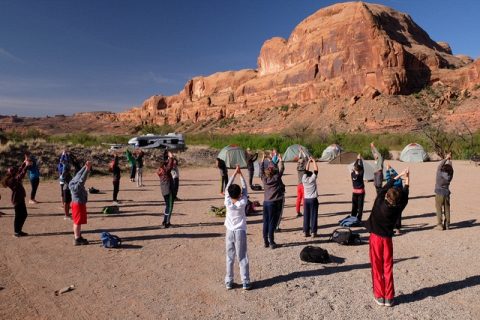


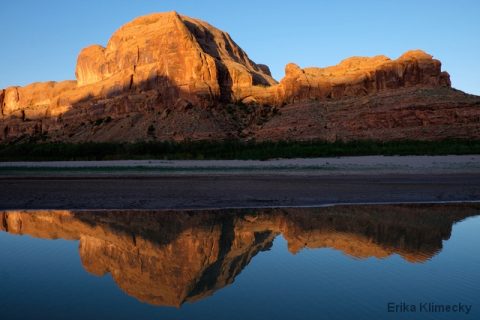
So we took a hike after dinner and parked ourselves on the sandstone directly underneath the arch… 30 students and five chaperones scrambled up makeshift ladders, across craggy sandstone as the arch came into view. And the teacher asked for the journals again.
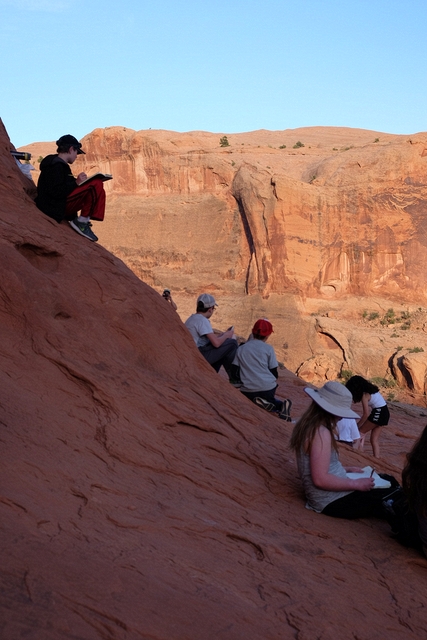
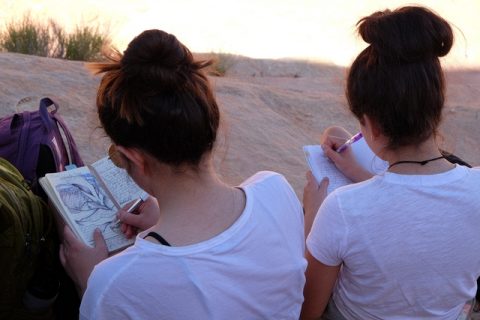
I was distracted, only hearing him out of the corner of my ear. There was a serious photographer on the far side of the arch, waiting for the light to get perfect. I was giddy that we had arrived early enough to catch the best light myself, running up and down the curves, framing, snapping, waiting for light to change. I was trying to stay out of the photographer’s way, mind the kids as they scrambled up the rock, watch the light change and the scene unfold. It’s never a single task when I’m on these trips.
Then the teacher gathered the kids’ attention in his unassuming way, and issued another prompt. “Consider your perspective. You sit at a pretty unique position right now, where you are, with respect to this arch directly above you, and I want you to consider it and then write two sentences describing the space around you from your own perspective. Two sentences, no more, no less.”
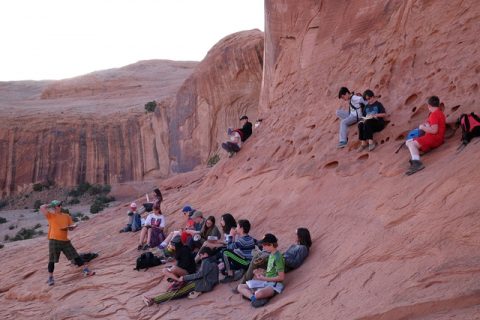
Again I loved the assignment so much I had to drop my camera and pick up my journal. I dated it and wrote the following:
The light fades up, not down. Warm orange reaches over my head to mingle with deepest azure.
But I couldn’t stop at just two sentences so I did the assignment twice, adding:
The bright colors fade. Azure becomes faint, orange turns to gray.
And then, you guessed it, I pointed my camera and captured perfect light on Corona Arch.
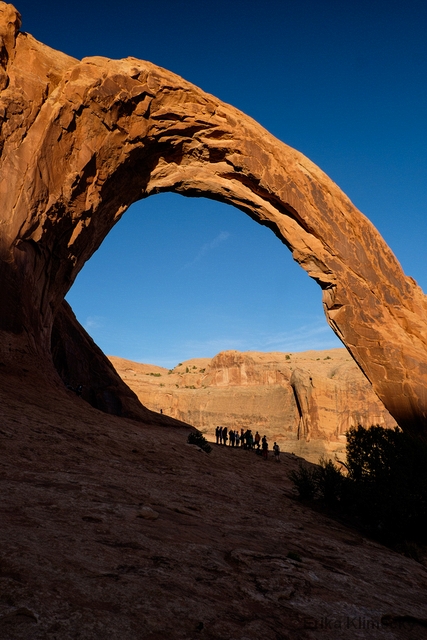
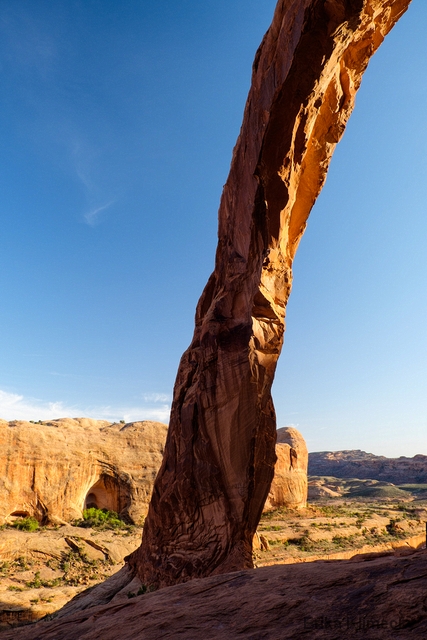
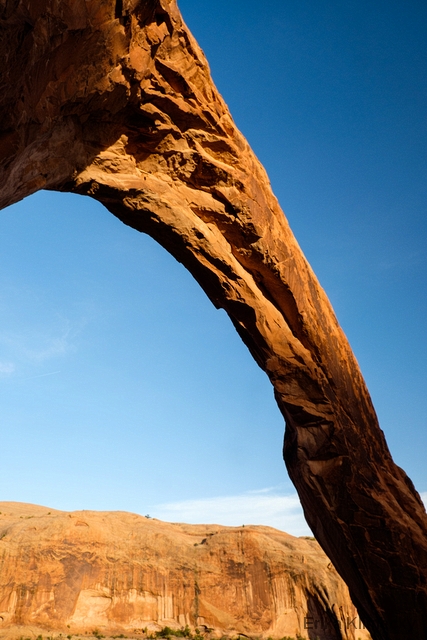
Arches NP speaks for itself, so in our 90-minute hke in the park I got these:

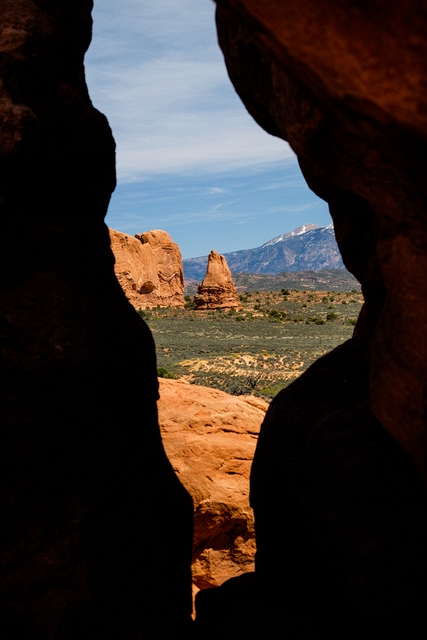


Our last camping night was at a desolate campground below Lake Mead. As we set up tents, the adults noted how stark it was… I think it was described as a turd in the desert, but the view at night while we were singing at the campfire made it all worthwhile. And the stars were divine even over the lights of Las Vegas in the distance.
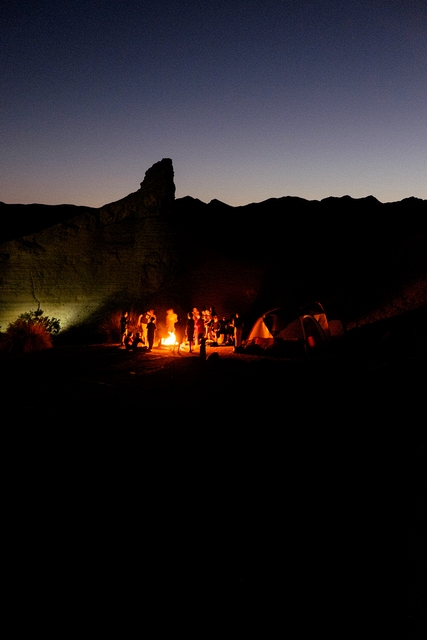
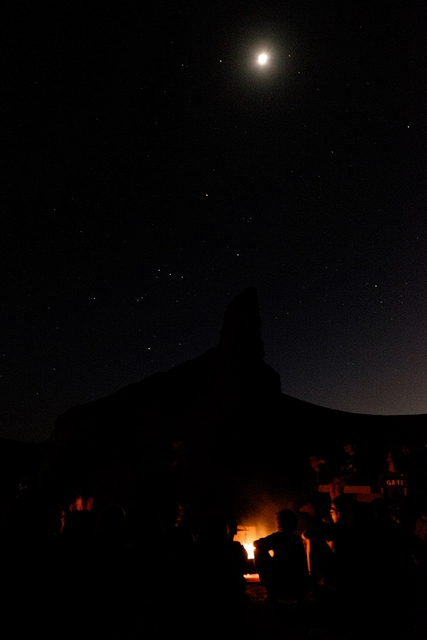
The Valley of Fire was unexpectedly beautiful at dawn on our last day. We had driven all night, sleeping like sardines on the hippie bus (I could tell you about the smell of 30 pairs of kid-feet in the desert after a week on the bus, but I won’t), and pulled into the park just as the sun was rising. It had the most dramatic colors of all the canyons we saw. It’s a state park… not even a national. It doesn’t get the notoriety it deserves, and perhaps that’s a good thing. Only an hour outside of Las Vegas, it’s usually skipped over for larger, higher profile national parks in Utah, just another hour away.
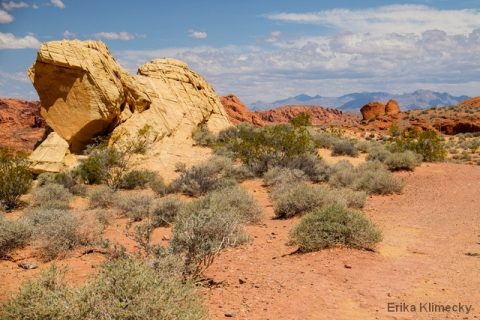

It was the last day of hiking in striped, red rock, slot canyons, surrounded by desert wildflowers in bloom. Early morning light and the coolest part of the day made this hike near perfect. I spotted a desert tortoise just off our path and pointed it out to everyone. Much excitement and attempts to feed it dandelions followed. Kids and animals. It’s a fun combo.
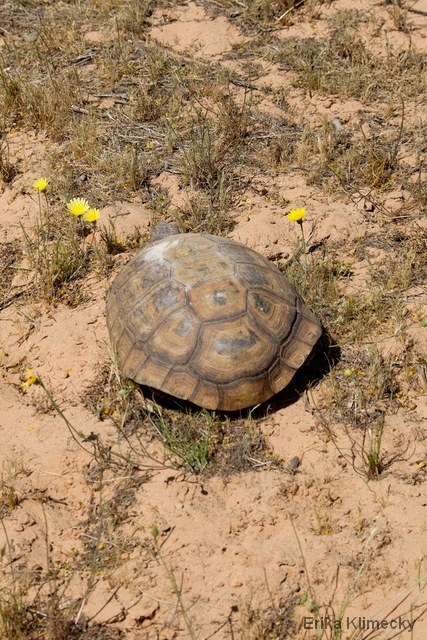
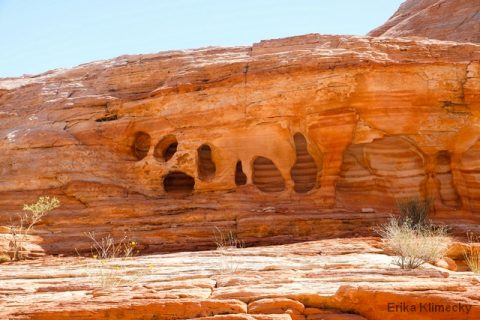
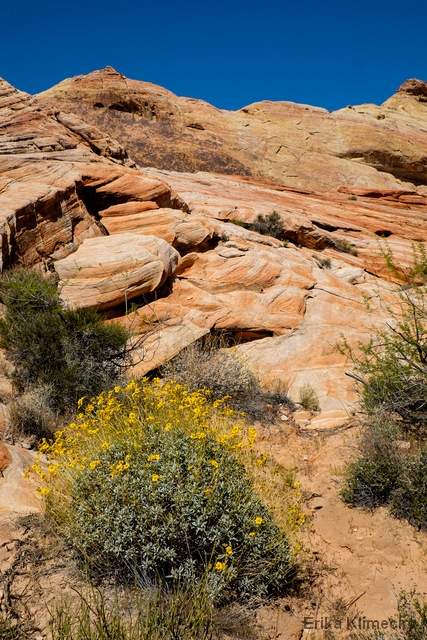
And now… the mountains are calling and I must… pack. Namaste.